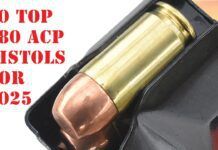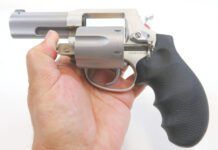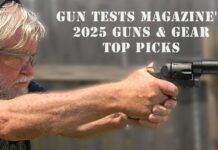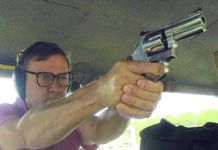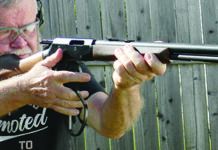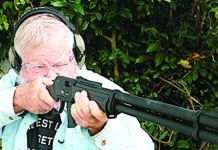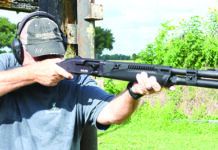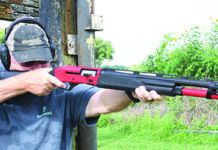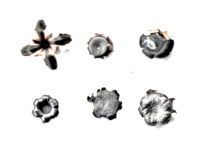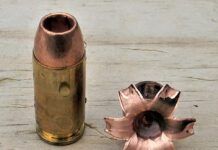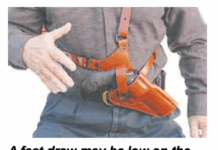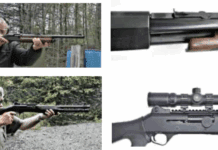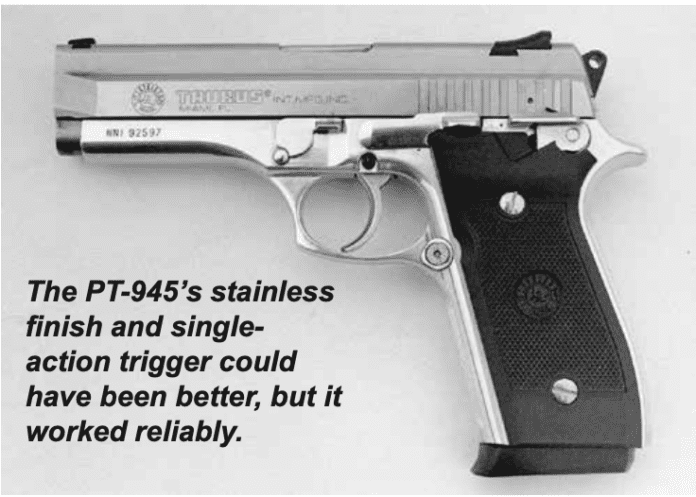In the February 1995 issue, we tested a quartet of 45-caliber semi-autos, two of which had significant drawbacks, our shooters said. In this installment of Gun Tests Classics, we revisit the winner of that test, a Taurus PT-945, and see if its current used pricing makes it a still-valid recommendation for today’s shooters. Here’s a quick recap of the losers in that test:
● Astra A-100: Functioning and accuracy were adequate. However, its finish needed considerable improvement.
● Auto-Ordnance General: A glitchy magazine made us hesitant to recommend it.
● Colt’s M1991A1 Compact: Didn’t malfunction and was surprisingly accurate for a subcompact 45 ACP, but we weren’t satisfied with the fitting of some of its parts.
And here’s the winning pistol in that 1995 test:
Taurus PT-945: Thin Grip, Good Performer
The PT-945 is Taurus’ first 45 ACP pistol. This double-action handgun started shipping in the latter part of 1994. It utilizes a conventional (closed top) slide, a SIG-style locking system, and an alloy frame.
Equipped with a 4.25-inch barrel, the PT-945 measures about 7.5 inches long and 5.6 inches tall overall. Unloaded, it weighs almost 30 ounces. Capacity of the gun’s single-column magazine is eight rounds. The stainless-steel version tested here carried a $621 price tag [in 1995].
It featured a stainless-steel barrel and slide with a silver-gray matte finish. The aluminum-alloy frame was highly polished and left white. A few minor tool marks on the right side of the grip frame hadn’t been polished out, but all metal parts were satisfactorily fitted. The two dull-black plastic grip panels covered the sides of the frame only.
This Taurus was marginally muzzle heavy, due mainly to its lightweight frame. However, it balanced over the hand and was a good pointer. All of our shooters thought the grip was too thin, requiring a tight grasp to keep it from twisting in the hand during firing. Recoil was moderate for a 45 ACP pistol, and shot recovery didn’t take a great deal of effort.
Thanks to its dual levers, the three-position manual safety could be manipulated with either thumb. Moved to its uppermost position, the safety locked the hammer and trigger, regardless of whether the hammer was cocked or not. In the mid-position, the safety disengaged. When pushed all the way down, the hammer decocked and the lever returned to the “off” position.
This Taurus functioned as it should. The single-column magazine readily accepted all eight rounds and slid in and out of the magazine well freely. Slide movement was smooth, and retracting it didn’t take an unusual amount of effort. Feeding and ignition were 100-percent reliable with the ammunition we tried. Extraction was sure, and fired casings were consistently thrown about 4 feet up and 6 feet to the right. The gun’s passive firing pin block and aforementioned manual safety worked perfectly.
The trigger could have been better. Single action, its pull had an eighth of an inch of take-up, some creep, and broke at a spongy 5.5 pounds. The long double-action pull was relatively smooth and released at 8.5 pounds.
Our test gun’s accuracy was ammunition dependent. We obtained the best five-shot average groups, 1.5 inches at 15 yards, using Federal’s American Eagle brand 230-grain full-metal-jacketed load.
Bottom Line: The PT-945’s versatile safety, easy takedown and moderate-sized grip should appeal to a wide range of shooters. Despite its mediocre trigger, which is not unheard of on a Taurus, we can recommend it.
The Blue Book of Gun Values has the stainless PT-945 for $395 in 90% condition. We wouldn’t want to go much higher than $400 for one in any condition.
Adapted by Gun Tests Staff, using evaluations from Gun Tests Team members. GT



